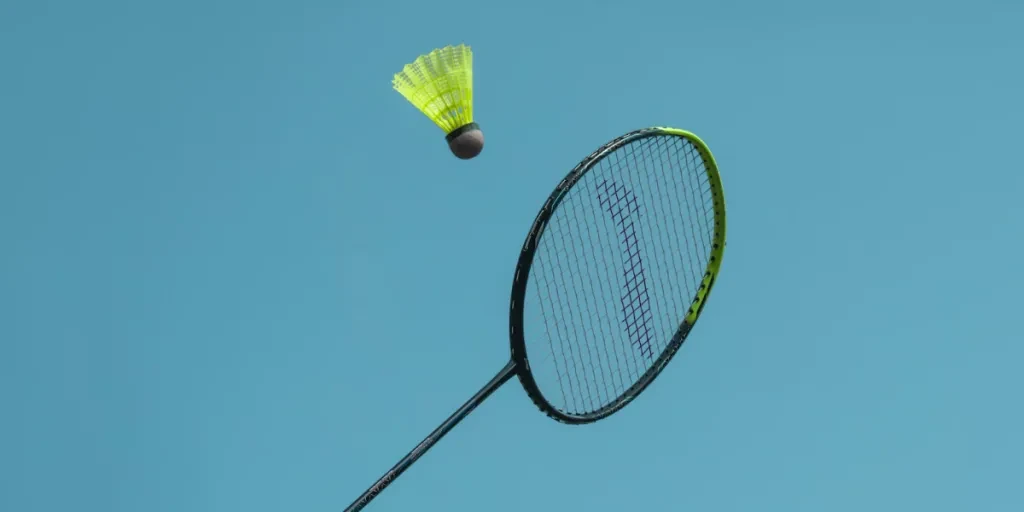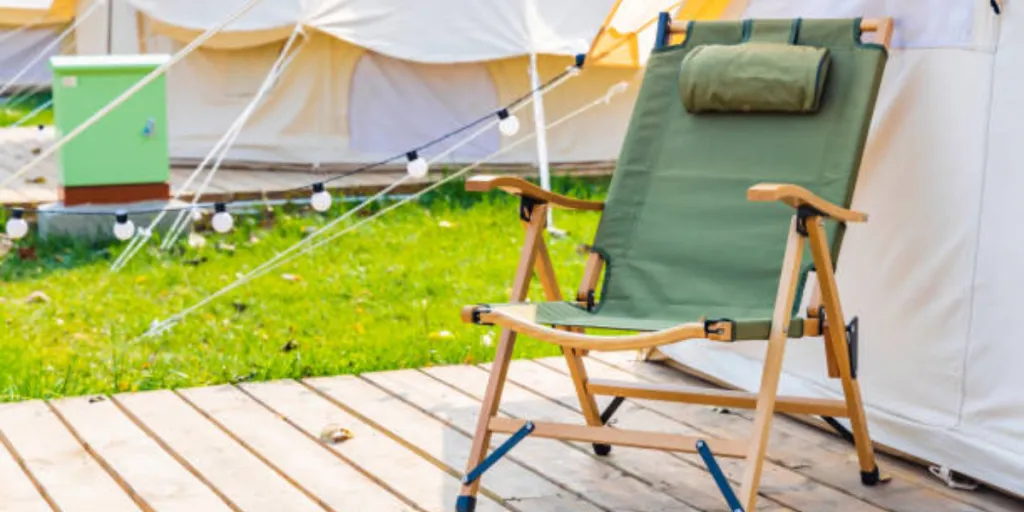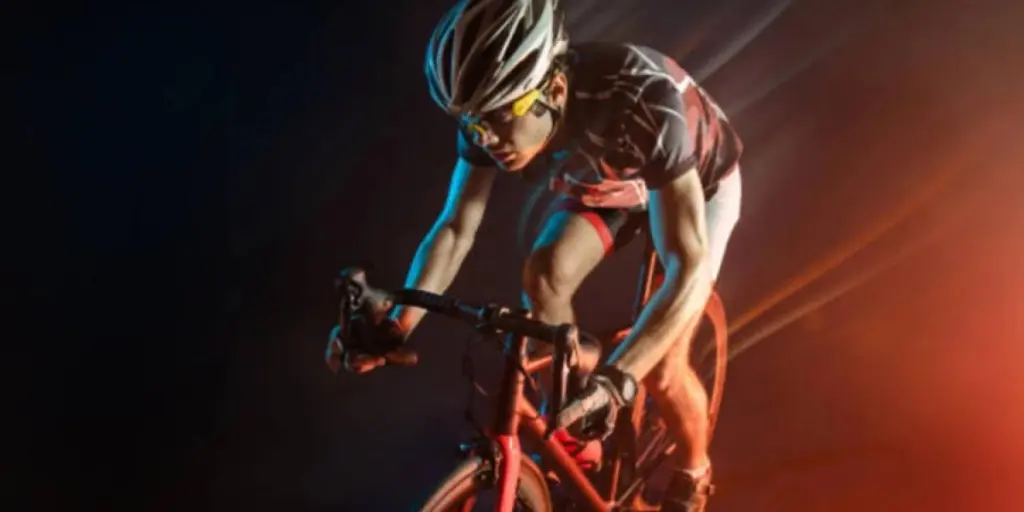Whether one is just starting their badminton journey or has been playing for years and is an advanced or professional player, choosing the right badminton racket is essential as it not only needs to adapt to the individual’s playing style but also needs to have a positive impact on their performance on the court. Consumers who don’t choose a badminton racket wisely will see the effects of that decision almost immediately when they start to hit.
This guide for choosing badminton rackets will cover tips on what to look for in a badminton racket as well as some examples of the most popular types of rackets among consumers in 2023.
Table of Contents
Global market value of badminton rackets
What to look for when choosing badminton rackets
3 types of badminton rackets
Conclusion
Global market value of badminton rackets
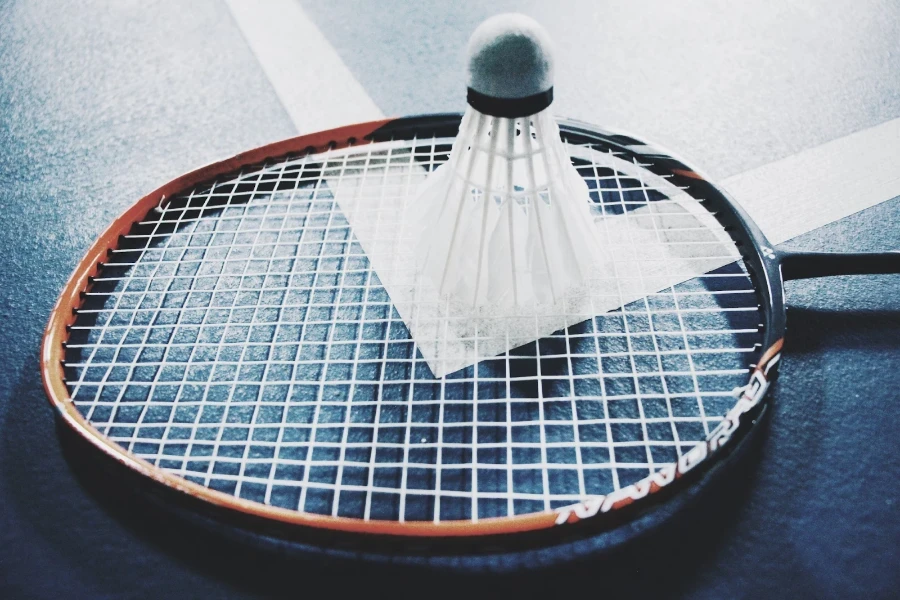
In recent years there has been a surge in consumers spending more time outdoors and partaking in extracurricular activities and sports, whether that be inside or outside. Consumers are now making more of an effort to take care of their overall health and fitness and badminton is rapidly becoming a good option for consumers of all ages since it can be played at different skill levels and doesn’t necessarily take a big toll on the body. As well as the physical benefits, badminton helps with hand-eye coordination and is a good way to socially interact with others.
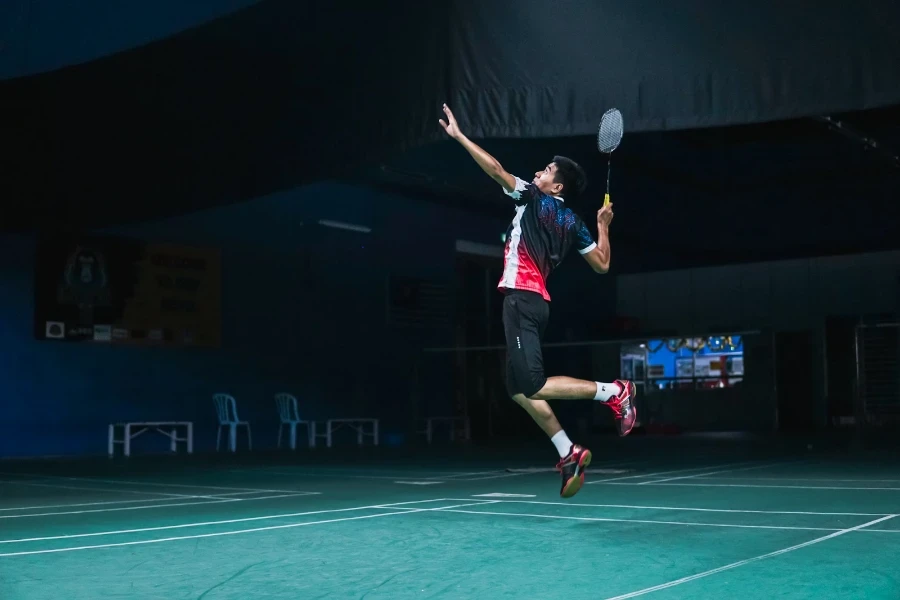
On a global level, the market value of badminton rackets reached over USD 800 million in 2022 and by 2031 that number is expected to grow substantially to at least USD 1.4 billion at a compound annual growth rate (CAGR) of 6.7% during that period. According to Business Research Insights the most significant growth will occur in North America as more people are learning about the game and taking an interest in the professional players.
What to look for when choosing badminton rackets
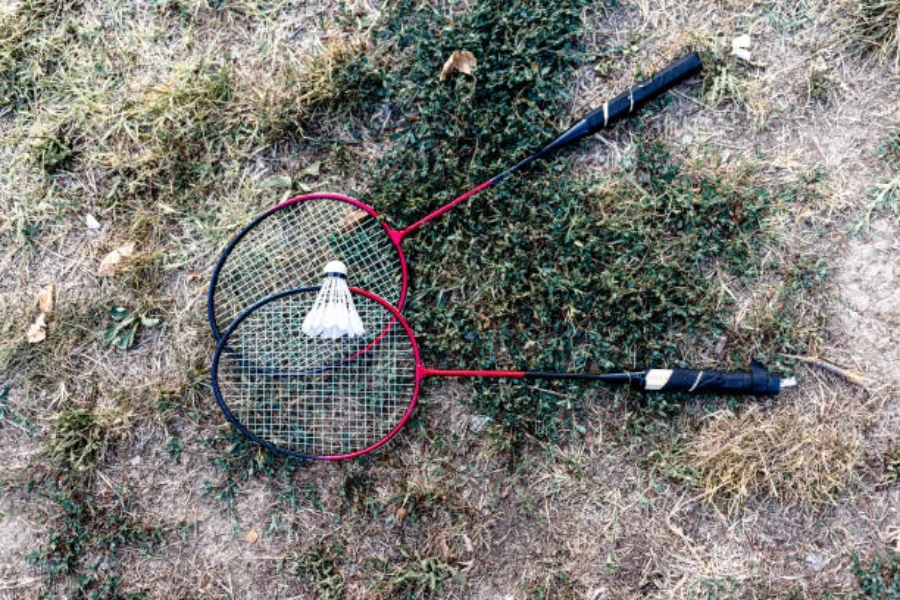
There are several factors that need to be taken into account while the consumer is choosing a badminton racket that’s right for them. It’s not just the weight and how it looks that matters – other factors will impact the overall performance of the player.
Grip size: Not all hands are the same size so it should go without saying that not all the grip sizes of a badminton racket are the same either. Choosing the right grip size is crucial as it not only impacts how a player hits but it can also cause injury in the long term if the grip size isn’t correct. The majority of rackets are available in G5 or G4 as they are the most commonly used. As the number goes smaller the grip size increases which will mean that the player uses more of their arm than their wrist.
Flexibility: Badminton racket flexibility refers to how much the shaft will bend when it’s being swung. The flexibility chosen will depend on the individual, with stiffer shafts providing more control and flexible shafts providing more power.
Balance point: The balance point is another factor that depends on the individual. A heavier head will provide more power, an even-balance racket provides both power and control, and a head-light racket is more about control and maneuverability.

Weight: Heavier rackets will provide more power for the player and lighter rackets offer more control, similar to how the balance point works. The average weight of a badminton racket sits between 3U (85-89g) and 4U (80-84g) as these weights provide a good balance.
String tension: String tension will vary depending on the individual and their style of play but as a rule of thumb higher tensions (24-30lbs) provide more control and accuracy whereas lower tensions (18-22lbs) help to generate speed and power.
Head shape: Oval shaped rackets are a more traditional shape and offer precision but can be difficult to control. Isometric rackets, on the other hand, are preferred by beginners and intermediate players as they have a larger sweet spot that’s more forgiving when the shuttlecock is mishit.
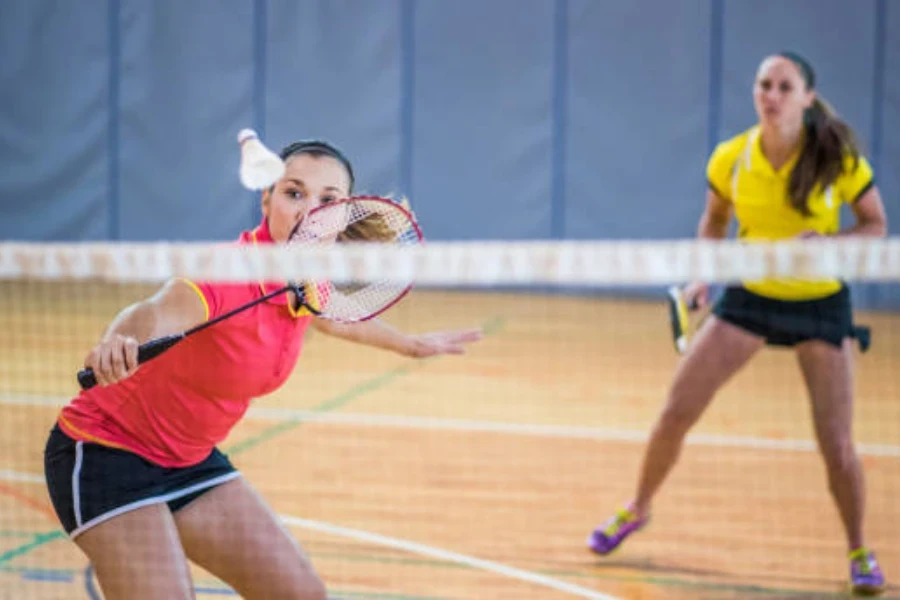
Playing style: In order to get the most out of a game or practice session a badminton racket needs to match the playing style of the individual. An aggressive player will want a different weight and balance point than a defensive player will, for example.
Budget: Badminton rackets are made of different materials and newer versions have various features not found in more basic ones. The more expensive rackets aren’t necessarily the better option so consumers will look at not only their budget but also at what each racket can offer them in terms of playing style.
Material: Lighter materials such as carbon fiber, graphite, and aluminum are the most popular ones used but steel is also an option. The lighter the racket the better the performance tends to be. See the table below for more:
| Material | Features |
| Graphite | Lightweight, durable, and easy to maneuver togenerate fast swings. The stiffness of the racket provides better control and accuracy. Good for all skill levels. |
| Carbon fiber | Lightweight and stiff which allows players to generate quick and powerful swings – ideally for smashes and clears (aggressive play). Good for all skill levels. |
| Aluminum | Good for beginners and intermediate players due to their durability and affordability. Heavier in weight so they are less likely to break and the heavier weight makes it easier to control. |
| Steel | Not as commonly used but they are known for their durability as well as affordability. They’re heavier than most rackets so they can cause fatigue when used for a long period of time. Good option for recreational players and beginners. |
3 types of badminton rackets
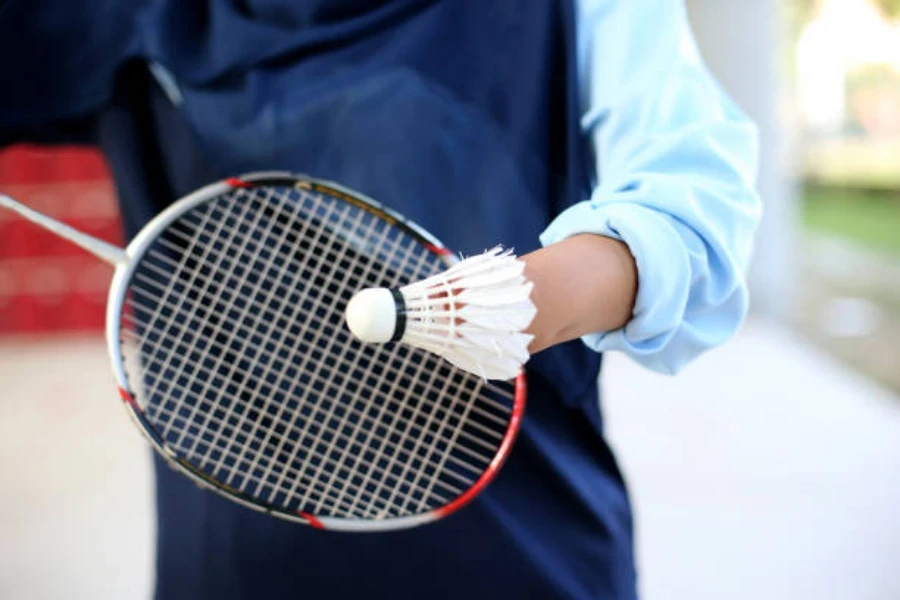
The balance point is a crucial factor when choosing badminton rackets and this is also what the 3 types of badminton rackets are based around. Consumers will take into account their own playing style as well as their skill level when choosing a badminton racket and although they will be able to play with any style, choosing the wrong one will have a negative impact on their game that will be instantly noticeable.
According to Google Ads, “badminton rackets” has an average monthly search volume of 246000 searches. Between March and September 2023 the number of average monthly searches is steady with 246000 searches over a 6 month period.
Looking more specifically at the types of badminton rackets, “head heavy badminton rackets” is searched for 2900 times per month, “even balance badminton racket” is searched for 880 times, and “head light badminton racket” has 480 searches per month. Keep reading to learn more about each one.
Head heavy badminton rackets
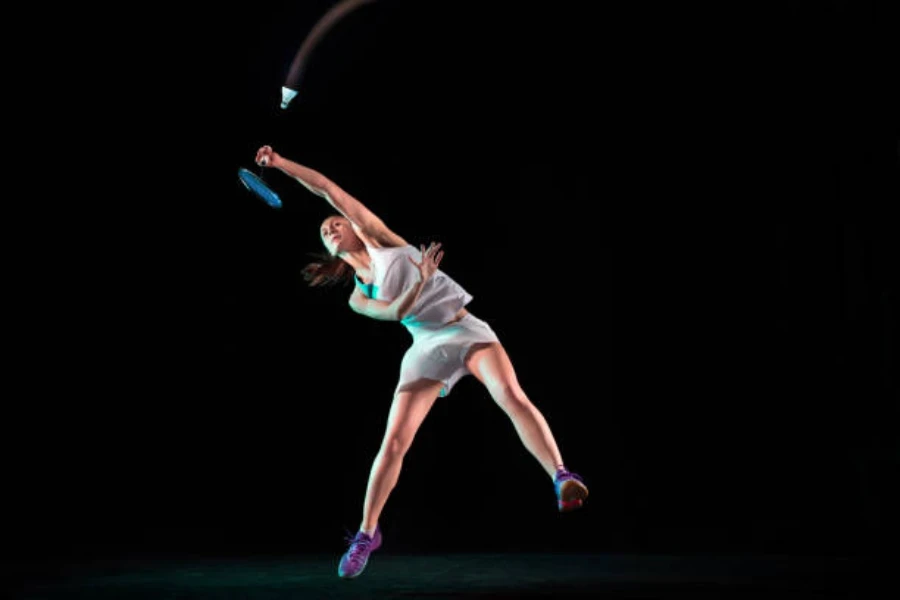
Head heavy badminton rackets are the preferred racket choice for players that have an aggressive playing style and require more power than others. Much of the racket’s weight is found in the head part of the racket which helps to generate more power and momentum in the swing. These rackets are ideal for players who like to hit powerful smashes and they offer greater stability than others when it comes to hitting offensive shots.
The head heavy badminton racket is known to create less fatigue in the arm since not as much energy needs to be exerted to generate power, which is a big positive to consumers who are playing at a higher level. These rackets do however offer less flexibility so aren’t a good choice for defensive play or doubles but they are very popular with consumers who predominantly play singles matches and need to exert a lot of power to keep the rally going.
Between March and September 2023 the average monthly searches for “head heavy badminton rackets” is around 2900 searches over a 6 month period. This number remains the same for most months apart from May to July where the number drops to 2400.
Even balance badminton racket
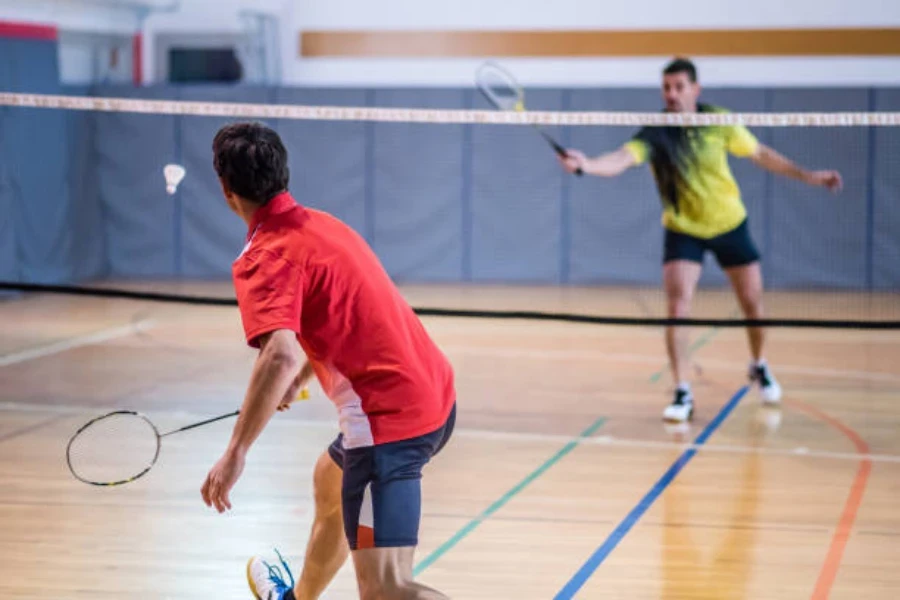
The most versatile type of racket for players of all abilities is the even balance badminton racket. This racket has an even weight distribution that makes it more suitable for different styles of play, whether the player wants control or power. It can be used for both offensive or attacking shots as well as defensive shots since the flexibility of it allows players to react quicker than with a head heavy badminton racket.
Players who are at the beginning stages of their badminton journey or want to focus on perfecting their skills often prefer the even balance badminton racket since it doesn’t focus too much on either control or power and is comfortable for them to handle. This type of racket can equally be used by advanced players who need to adapt to different styles of play during matches.
Between March and September 2023 there is an increase in average monthly searches for “even balance badminton racket” of 18%, with 720 and 880 searches respectively over a 6 month period.
Head light badminton racket

Head light badminton rackets are the opposite of head heavy badminton rackets and allow players to have more control and maneuverability over their shots. These rackets are the ideal choice for players who need to react quickly to fast-paced rallies, like in doubles, and that need a quick recovery after each shot. The majority of the weight of this racket is found in and around the handle and grip area so the head itself is relatively lightweight.
The head light badminton racket is a very beginner friendly choice for players who are still working on their skills as it’s easier to control but it’s equally as popular with more experienced doubles players. Players who need more power in their shots, such as singles players, will lean towards a more head heavy racket.
Between March and September 2023 there is an increase in average monthly searches for “head light badminton racket” of 19%, with 480 and 590 searches respectively over a 6 month period.
Conclusion

This guide for choosing badminton rackets has covered a number of points that consumers will consider when purchasing a racket. Factors such as the balance point, weight, flexibility, grip size, and the individual’s playing style are just some of the factors that will be considered.
In terms of the types of badminton rackets available there are three that are the predominant options: head heavy badminton rackets, even balance badminton rackets, and head light badminton rackets. Consumers will choose a badminton racket that is suitable for their style of play and that feels comfortable to hit with to get the most out of their game.
Interested in learning more about other racket sports? Take a look at these must-have types of tennis training equipment or the top unisex table tennis shoes.
